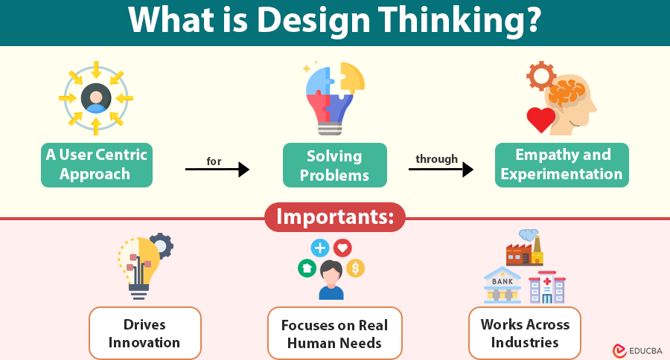Educba
4d
395

Image Credit: Educba
Design Thinking
- Design Thinking is a user-centered, iterative problem-solving approach emphasizing empathy, creativity, and experimentation for innovative solutions.
- It involves understanding user needs, problem reframing, idea brainstorming, prototyping, and testing for effective results.
- Key stages include Empathize, Define, Ideate, Prototype, and Test.
- Industries like healthcare, education, and public policy use Design Thinking.
- It drives innovation, focuses on human needs, and works across industries.
- Design Thinking involves empathy, problem definition, brainstorming, prototyping, and testing.
- Real-world examples include Airbnb, Stanford Medicine X, and GE Healthcare benefiting from Design Thinking.
- Common mistakes include fast solutions, lack of user research, and treating it as a one-time process.
- Tips include starting small, involving all team members, testing rapidly, and tracking impact.
- Design Thinking tools include Dovetail, Miro, Figma, Trello, and more to streamline the process.
- Future trends involve AI integration, VR/AR use, systemic problem-solving, diversity focus, and remote collaboration.
Read Full Article
23 Likes
For uninterrupted reading, download the app